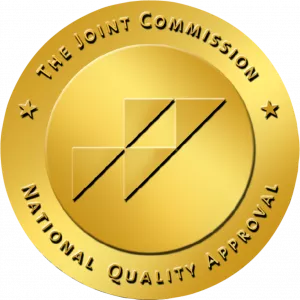Vyvanse (lisdexamfetamine dimesylate) is a prescription drug and central nervous system stimulant that’s mainly used to treat ADHD in adults and children over age 6. It’s also used to treat moderate to severe binge eating disorder (BED) in adults. Vyvanse comes in tablets and capsules with different doses, ranging from 10mg to 70 mg. Vyvanse increases the levels of norepinephrine and dopamine in the brain, which stimulate the feelings of pleasure and reward.
Like most drugs, Vyvanse has a definite abuse and addiction potential if used for the wrong reasons or without a prescription.
Vyvanse Withdrawal
Withdrawal is a state in which the body experiences physical or psychological distress as a result of quitting or cutting back on drugs. Withdrawal comes as a result of dependence - when a person is dependent on a drug to be able to function in day-to-day life. Dependence on a drug builds tolerance, which means that the person’s body requires increasingly larger amounts of the substance in order to enjoy the same pleasurable effects as before. Once a person develops tolerance to a certain drug, stopping or reducing its intake will lead to withdrawal. Understandably, the higher the person’s tolerance, the more difficult the withdrawal symptoms will be.
Vyvanse withdrawal is a result of a sudden decrease in neurotransmitters - norepinephrine and dopamine - in the brain. The body must now adjust to be able to function with a lower level of pleasure and stimulation, which causes withdrawal symptoms. Withdrawal symptoms are typically the opposite of the pleasurable effects of the drug.
Vyvanse Withdrawal Symptoms
Vyvanse withdrawal symptoms will vary from person to person. Their severity depends upon factors such as the amount taken, how long it has been taken for, and whether or not the person is dependent on other substances as well, such as alcohol or other drugs.
The physical symptoms of Vyvanse withdrawal can include:
- Extreme fatigue
- Shaking or trembling
- Headaches
- Increased appetite
- Sweating
Psychological symptoms include:
- Depression
- Anxiety
- Paranoia
- Sleep disturbances
- Strange dreams
- Vyvanse cravings
- Agitation
- Inability to concentrate
- Lack of motivation
Vyvanse Withdrawal Timeline
People wonder, ‘how long does Vyvanse withdrawal last?’ There is no proper answer to this question since the withdrawal timeline will differ according to the individual and their level of dependence on the drug. Generally, the first stage of Vyvanse withdrawal is the ‘crash.’ This stage occurs as soon as the stimulant effects of the drug begin to wear off, and can last for 1 -2 days. After that, the withdrawal stage begins. This is when the body tries to regulate its chemical imbalance, and can last between several days to weeks. In this phase, the body works hard to regulate neurotransmitter levels in the brain. Depression, fatigue, increased appetite and cravings will usually be experienced at this point. After that, the other symptoms mentioned above can also take effect.
Vyvanse Crash
When the effects of Vyvanse start to wear off, the person will experience a Vyvanse crash. This means that the drug is leaving the system. Since Vyvanse is a stimulant, once it leaves the body, the opposite effects of stimulation will kick in.
The following are the symptoms one might suffer from during a Vyvanse crash:
- Fatigue
- Irritability
- Cravings for Vyvanse
- Lack of motivation
- Mood swings
A crash can occur even after the first time taking Vyvanse. If someone experiences a crash after taking Vyvanse regularly, it might be a sign of dependence on the drug.
If you or your loved one is addicted to Vyvanse, reach out to us at Avenues Recovery to begin your journey to sobriety.
Vyvanse Detox
One may be advised to stop taking Vyvanse suddenly and completely in order to detox from the drug. This is referred to as "stopping Vyvanse cold-turkey". For someone who took a high dose, a safer option may be to taper off of the drug slowly. (Tapering refers to slowly decreasing the dose of the drug until the body can cope without the drug completely.) This method is safest, and usually recommended. Tapering allows the body to slowly adjust to coping without the drug as opposed to being shocked into a new reality.
To learn how to taper off of Vyvanse in the most effective and safe way, it’s important to be in contact with a doctor or enroll in a rehab. A personalized schedule will be created to help you taper off of Vyvanse with successful results.
Treatment Options for Vyvanse Detox
Once fully detoxed from Vyvanse, one can begin a treatment program for Vyvanse addiction. By joining an inpatient rehab facility, one can greatly benefit from behavioral therapies that can change unhealthy attitude towards the drug. These include:
- Cognitive behavioral therapy (CBT)- focuses on and changes the negative thought patterns that lead to the problematic behavior.
- Contingency management- provides incentives to encourage positive results in behavior.
In rehab, one benefits from a drug-free and peaceful space where care is available 24/7, enabling them to fully focus on recovery. Additionally, medical intervention is always on hand in case it’s necessary.
At Avenues Recovery, our expert staff are waiting to help you regain control of your life. We have helped thousands of people reach sobriety, and we can help you too. Our professional addiction counselors will guide and support you every step of the way. Embark on your journey to recovery and contact us today! Bid farewell to a life of mental and physical pain and embrace a healthy and genuinely joyful life. We are waiting to hear from you!


